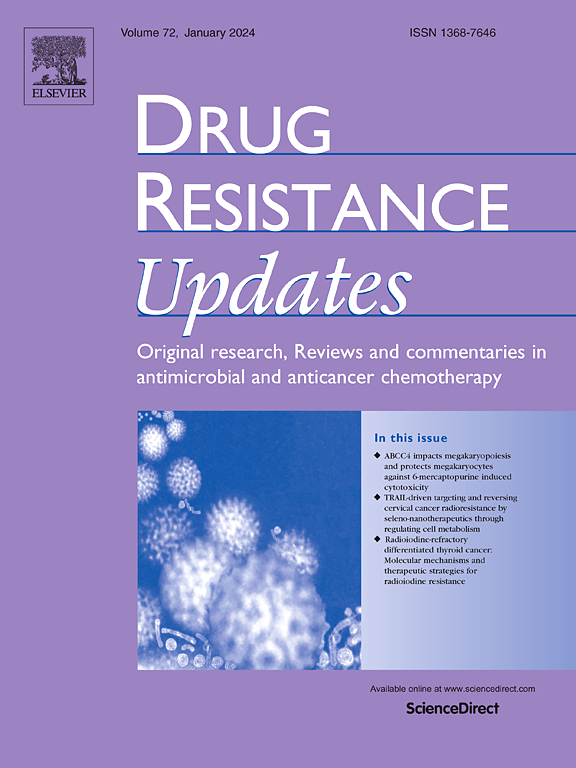Targeting NAT10 attenuates homologous recombination via destabilizing DNA:RNA hybrids and overcomes PARP inhibitor resistance in cancers
IF 15.8
1区 医学
Q1 PHARMACOLOGY & PHARMACY
引用次数: 0
Abstract
Aims
RNA metabolism has been extensively studied in DNA double-strand break (DSB) repair. The RNA acetyltransferase N-acetyltransferase 10 (NAT10)-mediated N4-acetylcytidine (ac4C) modification in DSB repair remains largely elusive. In this study, we aim to decipher the role for ac4C modification by NAT10 in DSB repair in hepatocellular carcinoma (HCC).
Methods
Laser micro-irradiation and chromatin immunoprecipitation (ChIP) were used to assess the accumulation of ac4C modification and NAT10 at DSB sites. Cryo-electron microscopy (cryo-EM) was used to determine the structures of NAT10 in complex with its inhibitor, remodelin. Hepatocyte-specific deletion of NAT10 mouse models were adopted to detect the effects of NAT10 on HCC progression. Subcutaneous xenograft, human HCC organoid and patient-derived xenograft (PDX) model were exploited to determine the therapy efficiency of the combination of a poly (ADP-ribose) polymerase 1 (PARP1) inhibitor (PARPi) and remodelin.
Results
NAT10 promptly accumulates at DSB sites, where it executes ac4C modification on RNAs at DNA:RNA hybrids dependent on PARP1. This in turn enhances the stability of DNA:RNA hybrids and promotes homologous recombination (HR) repair. The ablation of NAT10 curtails HCC progression. Furthermore, the cryo-EM yields a remarkable 2.9 angstroms resolution structure of NAT10-remodelin, showcasing a C2 symmetric architecture. Remodelin treatment significantly enhanced the sensitivity of HCC cells to a PARPi and targeting NAT10 also restored sensitivity to a PARPi in ovarian and breast cancer cells that had developed resistance.
Conclusion
Our study elucidated the mechanism of NAT10-mediated ac4C modification in DSB repair, revealing that targeting NAT10 confers synthetic lethality to PARP inhibition in HCC. Our findings suggest that co-inhibition of NAT10 and PARP1 is an effective novel therapeutic strategy for patients with HCC and have the potential to overcome PARPi resistance.
求助全文
约1分钟内获得全文
求助全文
来源期刊

Drug Resistance Updates
医学-药学
CiteScore
26.20
自引率
11.90%
发文量
32
审稿时长
29 days
期刊介绍:
Drug Resistance Updates serves as a platform for publishing original research, commentary, and expert reviews on significant advancements in drug resistance related to infectious diseases and cancer. It encompasses diverse disciplines such as molecular biology, biochemistry, cell biology, pharmacology, microbiology, preclinical therapeutics, oncology, and clinical medicine. The journal addresses both basic research and clinical aspects of drug resistance, providing insights into novel drugs and strategies to overcome resistance. Original research articles are welcomed, and review articles are authored by leaders in the field by invitation.
Articles are written by leaders in the field, in response to an invitation from the Editors, and are peer-reviewed prior to publication. Articles are clear, readable, and up-to-date, suitable for a multidisciplinary readership and include schematic diagrams and other illustrations conveying the major points of the article. The goal is to highlight recent areas of growth and put them in perspective.
*Expert reviews in clinical and basic drug resistance research in oncology and infectious disease
*Describes emerging technologies and therapies, particularly those that overcome drug resistance
*Emphasises common themes in microbial and cancer research
 求助内容:
求助内容: 应助结果提醒方式:
应助结果提醒方式:


